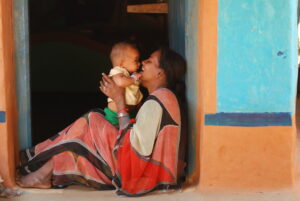
Over the past 20 years, tremendous progress has been made in global health thanks largely to an increasing evidence base of what works and a concerted effort by the global community to prioritize life-saving interventions. The mortality rate for children under 5, for example, has halved between 1990 and 2015, saving millions of lives. And maternal mortality has declined by nearly 44% during the same time period, saving more than 200,000 lives. Deaths from malaria alone—a leading cause of illness for children under 5 globally—are down 60% in just 15 years.
New vaccines, medications, and an understanding of what keeps people healthy have contributed to these advances in public health. Yet, not all populations are enjoying the fruits of this progress. An estimated 5.9 million children still die each year from diseases that are easily preventable or treatable. And more than 300,000 women die from maternal complications. Avoidable cases of death and disease are not limited to women and children, however, and can affect entire communities around the world.
Though the reasons behind avoidable cases of death and disease are as varied as they are complex, they generally involve a failure to reach populations due to geographic isolation, cultural discrimination, unhealthy behaviors/social norms, or extreme poverty. Over the past decade, the Center for High Impact Philanthropy (CHIP) has heard from academic researchers, nonprofit practitioners, and philanthropic funders about a particular set of effective health-related tools and practices that nonprofits are using to help reach these populations and transform the health of the world’s neglected communities. The process involves delivering life-saving health services and education at the community level, often in people’s homes or other local settings.
In this guide, we examine this community-based approach to health delivery and show how nonprofits are using it to reach remote or underserved populations. We highlight this approach to show how philanthropy can further support nonprofits trying to improve health and save lives when government resources are inadequate and families are too poor to pay out of pocket. Of the thousands of organizations around the world using this community-based approach, we selected nine nonprofits to profile in this guide. Each is a pioneer in a certain aspect of community-based approaches to health and together, they represent a variety of geographies (Africa, Asia, and Latin America/Caribbean), vulnerable populations, innovations, and ways that philanthropy can help.
This community-based approach to health delivery—while not cheap—is cost-effective, meaning that it provides tremendous health benefit for the cost. We offer this guide as a resource for donors who wish to make a greater impact in the health of vulnerable communities worldwide. Given recently published academic research that reviews decades of evidence, as well as new successes on the ground, there is no better time for funders to support community-based health delivery.
The reasons behind avoidable causes of death and disease are varied and complex, but generally fall into four categories.
Geographic Isolation – Members of these communities are often miles away from the nearest hospital and/or live in areas that are difficult to access due to unpaved roads, rocky mountain terrain, flood plains, etc.
Cultural Differences – Social and cultural barriers can separate underserved communities from local health providers. Families may decide not to seek care because they do not trust the providers, feel disrespected or misunderstood, or speak different languages.
Unhealthy Behaviors and Social Norms – Bringing about behavior changes such as healthy food choices, sanitary practices like handwashing, ending ‘open defecation’ (in streams or water sources), avoiding alcohol and tobacco, and breastfeeding newborn babies is not as simple as disseminating information. rather, entire communities must be engaged to create new social norms.
Resource Constraints – Inability to pay for health services is a major barrier for community members themselves. In resource-poor countries, local health systems are more likely to lack supplies, trained health workers, and quality care. Even when national health policy calls for these basic services, in countries with low gross domestic products, governments’ per capita expenditure for health is often meager, leaving many basic health needs unmet. For example, in Malawi, government health spending is $14 per capita, while leading health economists say that governments should spend a minimum of $44 per capita for a package of basic health services.
